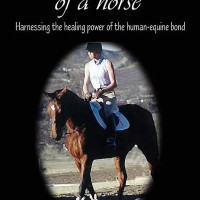
As sinuous advertisers and marketing consultants cleverly concocted strategies encouraging the masses to flock to their respective stores in droves and spend unheard-of amounts of money, merge with consumers’ unabated appetites for the latest and greatest gadget, device or fashionable gift, the result is a prime example of what authors John de Graaf, David Wann, Thomas H. Naylor and David Horsey so sagaciously dubbed “Affluenza”. As the title of their book (http://www.amazon.com/Affluenza-All-Consuming-Epidemic-Bk-Currents/dp/1576753573/ref=sr_1_1?ie=UTF8&qid=1322271876&sr=8-1) suggests, affluenza is a method of describing America’s proclivity for overspending as an actual disease, and one akin to an addiction. The authors further state that, like any disease, affluenza comes with a host of symptoms, from depression, anxiety, drug and alcohol addiction, physical health problems, to a variety of stress-related conditions. Clearly, however, this disease is yet without a cure — that is unless you consider the current state of the economy a cure — and at the same time, one that desperately needs treatment. Is it possible then that equine therapy can be helpful in the treatment of affluenza?
To answer this question, we must first understand a little more about the psychological etiology of affluenza. Affluenza can be characterized by the substitution of interaction (and the pleasure derived from) with people for interaction with objects. Interestingly, this concept is not far from what Donald Woods Winnicott described as “transitional objects”, or physical things that children use to transition from trust in the caregiver to trust in oneself. In Woods’ description — and this is well supported in the field of developmental psychology – a transitional object represents a progression in the child’s development. However, where adults are concerned, the transitional objects present in the state of affluenza (think cars, houses, furniture, electronic gadgets, etc.) could be considered regressive — that is a return to a previous state. Basically, the person is avoiding human connection, and instead turning to objects for some form of fulfillment.
Yet as the disease progresses, avoidance of connection with people increases, and as this leaves a psychological void, more items are purchased to try to make up for the emptiness the person feels. And then, the insecurities begin — Am I lovable? Am I worthwhile, intelligent, valuable? — and the avoidance, rationalization, and emptiness continues. One can just imagine then how difficult relationships become when they have been sidestepped for some time?
And this is also the point at which equine therapy can be incredibly effective. As horse, after all, is not a person, and doesn’t carry the same possibility for rejection, hurt, and embarrassment. So while a horse is also much more approachable to a person suffering from affluenza than another person, he is also much more tuned in to what is hidden under the layers of unnecessary material items. Far from being duped by the big house and fancy car, a horse pays attention to what the person is actually feeling. Owners of an exquisitely well-formed non-verbal communication system, a horse relies on the physiology that is presented to him/her to determine what is really going on. So sure, a person may pull up in a BMW, but if his levels of serotonin are low, and epinephrine is high, he will actually be feeling overly keyed up, and a bit empty inside, which, after all, are two of the most prominent symptoms of affluenza.